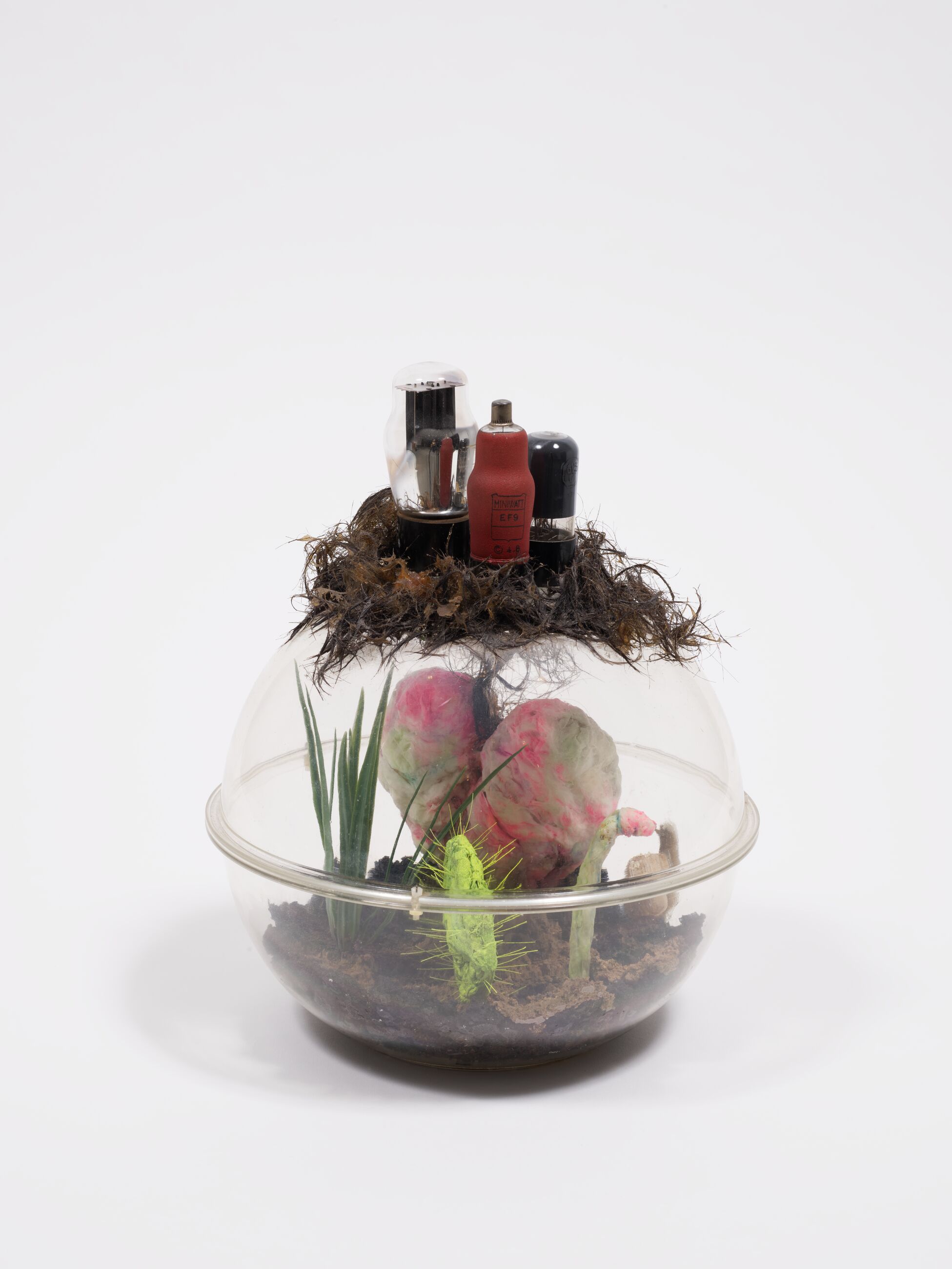Diary
Irradiated Gardens
The ecological anxiety of Tetsumi Kudo

Tetsumi Kudo, Cultivation of Nature & People Who Are Looking at It, 1970–71 © Hiroko Kudo, the Estate of Tetsumi Kudo / Artists Rights Society (ARS), NY / ADAGP Paris 2025. Courtesy Hiroko Kudo, the Estate of Tetsumi Kudo and Hauser & Wirth. Photo: Jessica Eckert
Long before climate change became a topic of global concern, Japanese artist Tetsumi Kudo (1935–1990) understood that the Anthropocene age had begun. Working in postwar Tokyo and later in Paris, he made paintings, sculptures and performances that sought to critique consumerism, political conformity and environmental degradation. He became especially known for his dystopian terrariums—cages and vitrines filled with plastic plants, mutated body parts and electronic refuse, in which nature and human consumption congealed into a new and unsettling symbiosis.
In his 1971 manifesto “Pollution – Cultivation – New Ecology,” Kudo proposed that humanity could no longer separate itself from the contamination it had unleashed. Cultivation of Nature & People Who Are Looking at It (1970–71) encapsulates this vision. The plexiglass dome presents a closed ecosystem containing a neon-pink heart and artificial plants carefully arranged below clumps of hair and electronic tubes. Kudo’s intention was not to illustrate the end of nature; he was questioning what “nature” even meant in an age of radioactive fallout and the rise of chemical pollutants.
His work continues to bring the environmental cost of technology, industry and mass consumerism on our lives to center stage, and it has influenced artists such as Mike Kelley, Paul McCarthy, Mika Rottenberg and Danh Võ. As present-day concerns of environmental damage become more urgent, Kudo’s philosophies feel increasingly more like prophecy than like science fiction. His irradiated gardens are glimpses not of a future lost, but of the strange, synthetic ecology we already inhabit.—Alexandra Vargo
